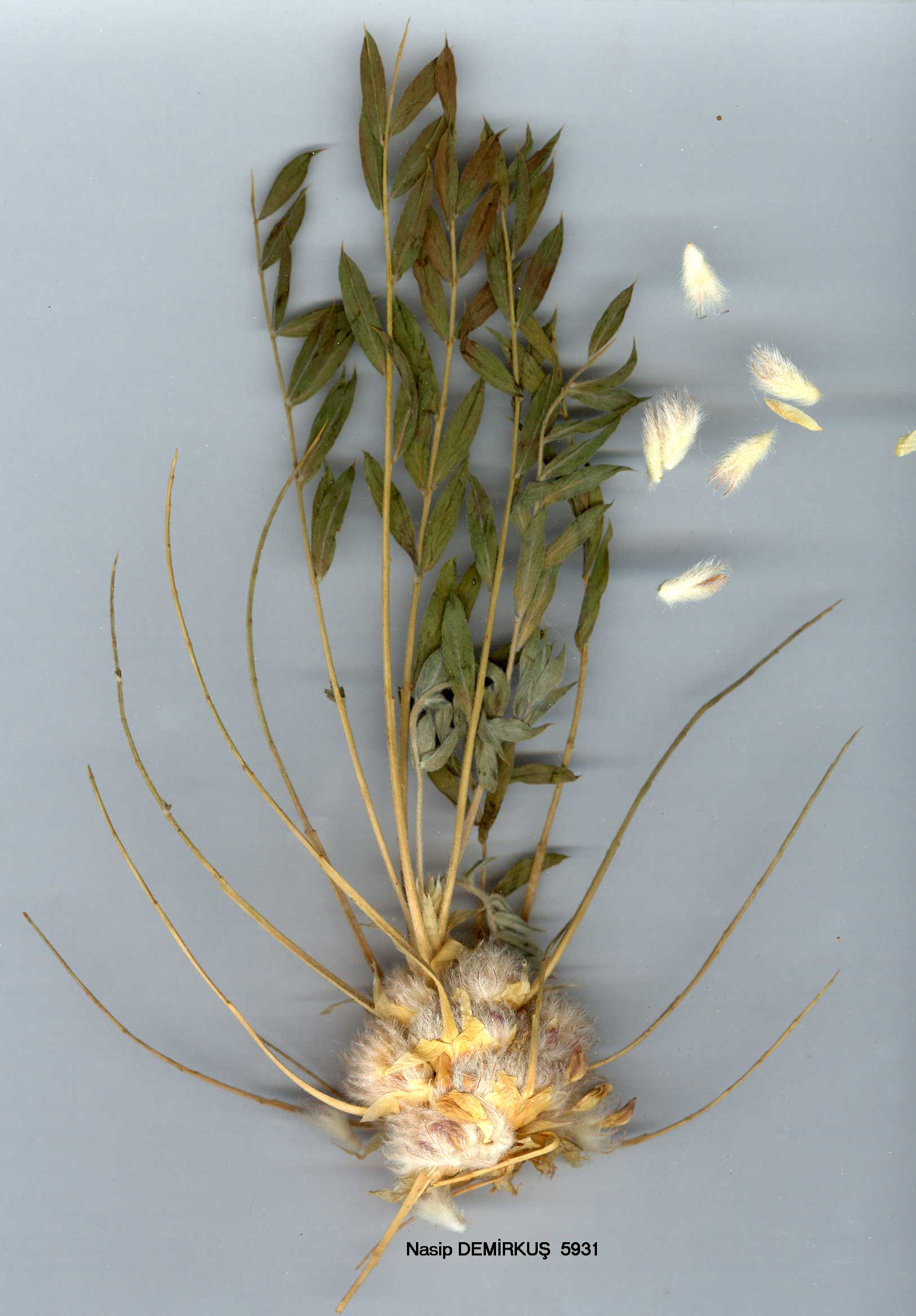| Fabaceae |
|---|

Astragalus longifolius LAM. |

Astragalus longifolius LAM. |

Astragalus longifolius LAM. |
 Astragalus longifolius LAM |
 Astragalus longifolius LAM |
Astragalus L. |
| A. longifolius Lam., Encycl. 1:322 (1783). Ic: DC, Astrag. t. 30 (1802). Low, thick-stemmed shrub; stems c. 10 cm. Leaf rachis spiny, 8-15(-20) cm. Leaflets 6-9-paired, glabrous, those of the upper leaves 15-35 mm, narrowly elliptic, spine-tipped, those of the lower leaves sometimes smaller, 10-15 mm, oblong and mucronate. Stipules 15-20 mm, triangular-lanceolate, white-tomen-tose, becoming glabrous. Flowers sessile in the leaf axils. Inflorescence globose, 3-5 cm diam., 20-50-flowered. Bracts 10-12 mm, ovate-lanceolate to widely ovate, navicular, tomentose towards the apex. Bracteoles absent. Calyx 11-14 mm, densely villous or pilose; lobes often incurved and less densely hairy above, divided to the base though apparently forming a tube 4-6 mm long. Corolla bluish, pink or ?purple; standard 20-25 mm. Fl. 6-7. Chalky screes, etc., 1750-2000 m. Type: [Turkish] 'Armenia', Tournefort. E. Anatolia. B8 Erzurum: Kop Da., between Aşkale and Bayburt, 2000 m, Hub.-Mor. 11449! Van/Bitlis: by Van G., 1750 m, M. Zohary & Plitmann 2162-13! B9 Bitlis: E. flank of Nemrut Da., 1800 m, D. 23546! ibid., 1950 m, Birand& Karamanoğlu 295! Endemic; Ir.-Tur. element. Probably related to A. oleifolius and A. gaziantepicus. The specimen from Erzurum, Hub.-Mor. 11449, agrees well with Boissier's description and with De Candolle's plate, but differs in the small oblong leaflets on the lower leaves. The remainder of the specimens lack these smaller leaflets but differ from Boissier's description in having incurved calyx teeth. Tournefort described the flowers of the type as being purple, but it is not known whether this applied to fresh or dried material. |